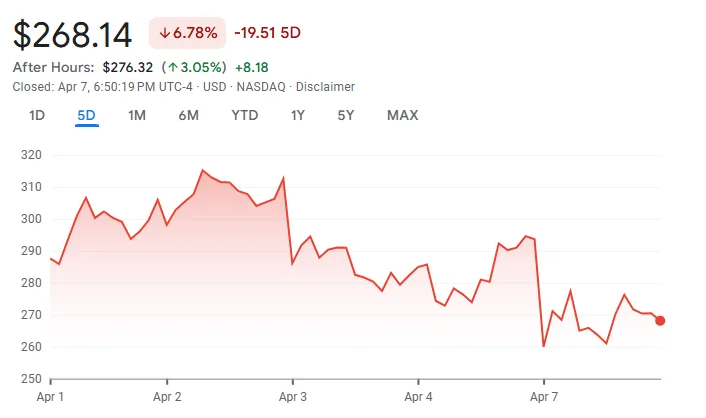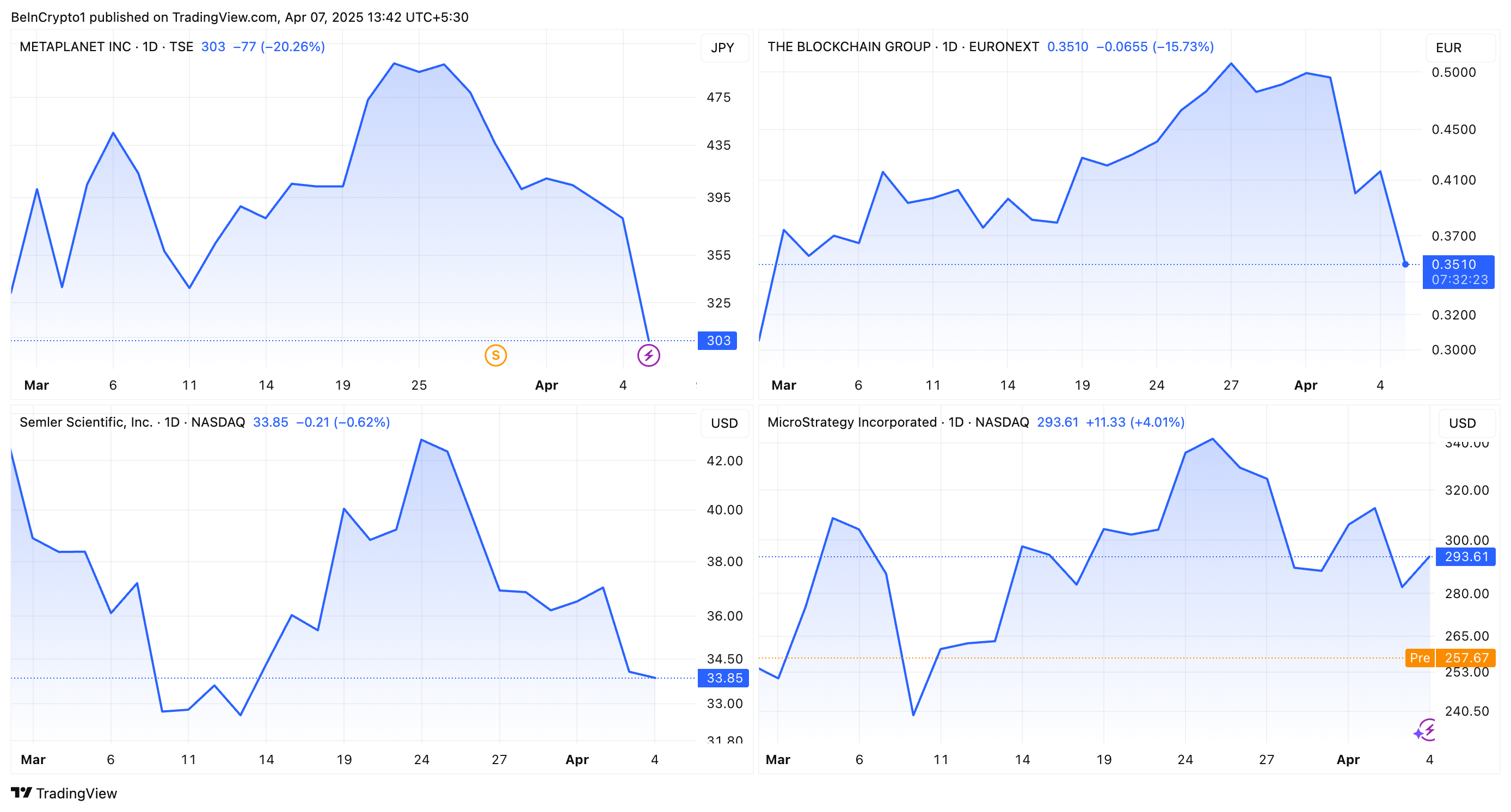Bitcoin
Bitcoin Risk Of Sell-Off Drops Sharply As Short-Term Holder Profit Remains Low

Over the weekend, Bitcoin suffered from mounting sell pressure that pushed the price below $70,000 once again. However, with the short-term hold profitability remaining low at this time, the risk of the pioneer cryptocurrency suffering further sell-offs has dropped significantly.
Bitcoin Short-Term Holder Profitability At 3.35%
Crypto analyst Ali Martinez has soothed Bitcoin investors’ nerves with new data that shows a reduced risk of sell-off. The chart which was posted in the early hours of Monday shows that Bitcoin short-term holder profitability has remained low going into the new week.
According to Martinez, the low profitability, which is currently sitting at just 3.35%, means that there is a minimal risk of sell-off at this time. This is because short-term investors are likely to wait for higher profit margins before they start selling off their holdings for profit.
The chart shows that in the last few weeks, the Bitcoin short-term holder profitability has fluctuated wildly, as the Bitcoin price has struggled to find its footing. However, looking at the profitability over a longer period of time, and it seems that short-term holders have done quite well for themselves.
#Bitcoin short-term holders are seeing a profit margin of 3.35%, indicating a minimal risk of a $BTC sell-off! pic.twitter.com/ohl3lXUSl9
— Ali (@ali_charts) June 10, 2024
Compared to where the short-term holder profitability was at the start of the month of June, these investors are seeing positive upside as of recently. However, compared to previous sell trends, the profitability will have to increase for these short-term investors to begin selling once again.
Can BTC Surge From Here?
In a previous analysis of the Bitcoin price, crypto analyst Ali Martinez has mapped out where he expects the BTC price to go from here. The analysis showed the cryptocurrency’s movements over the last year with various corrections and peaks.
Going by this data, the crypto analyst believes that the next local top for the Bitcoin price could lie around the $89,200 level. From the current price of around $69,400, this would be a 28% increase in price, and a new all-time high for the digital asset.
Additionally, another post by the analyst shows that the Taker Buy Sell Ratio on the HTX Global Exchange rose as high as 730. What this means is that there is a lot of bullish sentiment toward the cryptocurrency and the analyst believes that this could drive the next rally.
For now, the Bitcoin price continues to struggle amid mounting pressure from bears. After reaching $71,000 last week, the price has since retraced most of its gains. Currently trading at $69,429 at the time of writing, it has seen a 0.45% increase in the last week. However, it remains the largest cryptocurrency with a market cap of $1.368 trillion.
Featured image created with Dall.E, chart from Tradingview.com
Bitcoin
Why Did MicroStrategy Pause Its Bitcoin Acquisitions Last Week?

Strategy (formerly MicroStrategy) did not buy any Bitcoin or sell any common stock this week, breaking a long-running streak. The firm officially disclosed that it has $5.91 billion in unrealized losses due to downturns in the crypto market.
Two likely scenarios explain this pause: Strategy is either waiting for more favorable market conditions or is forced into caution by these losses. Either way, the uncertainty may signal further apprehension among institutional investors.
MicroStrategy’s Bitcoin Purchase Pause: Cautious Signal or Liquidity Move?
Since Michael Saylor directed Strategy (formerly MicroStrategy) to start acquiring Bitcoin, it has become one of the world’s largest BTC holders. So far, it’s been a major purchaser in 2025, acquiring around $2 billion in Bitcoin on two occasions.
However, according to its most recent Form 8-K, Strategy bought zero BTC last week and didn’t sell any stock, either.
This isn’t the first interruption in Strategy’s Bitcoin purchases this year; it also paused acquisitions in February. Unlike that incident, this time feels substantially different due to fears of a US recession.
The pause in Bitcoin buying may suggest that Strategy’s management is taking a wait-and-see approach amid ongoing market volatility, possibly indicating that they believe Bitcoin could bottom out further before resuming purchases.
Billions have been liquidated from crypto and TradFi alike, and corporate Bitcoin holders have suffered serious losses.

The firm may also be trying to break its historic streak of consecutive purchases to avoid further downside risk until clearer market trends emerge.
However, a few prominent voices are taking a much more critical approach. The same Form 8-K shows that Strategy currently has $5.91 billion in unrealized losses in its Bitcoin holdings. There were already concerns about the firm’s liquidity, tax obligations, and over-leveraged debts.

Some community members are wondering how Saylor can avoid a crisis:
“Michael Saylor’s average BTC cost basis is ~$67,500. A 15% drop puts MicroStrategy deep in the red. That’s the thin line between ‘visionary CEO’ and ‘leveraged lunatic with a God complex,’” claimed Edward Farina via social media.
What’s Next for Strategy?
Essentially, Strategy serves as a major pillar of confidence in Bitcoin. If the firm sells, the market will notice. The crypto ecosystem carefully documents minor discrepancies in the firm’s BTC purchasing strategy, and a sale would be highly bearish.
Meanwhile, firms are already inventing novel ETF tools to short the company, praying for its collapse. What’s the best path to move forward?
So far, Saylor has been quiet about these market turns. MicroStrategy may be biding its time, planning to pull out another huge Bitcoin purchase whenever the market bottoms out.
It may also be paralyzed, unable to act due to its debt crisis and unrealized losses. For now, the uncertainty may signal broader apprehension among institutional investors.
This cautious stance may signal broader apprehension among institutional investors regarding current crypto market conditions, hinting at a potential pause before a renewed accumulation phase if market fundamentals improve.
Disclaimer
In adherence to the Trust Project guidelines, BeInCrypto is committed to unbiased, transparent reporting. This news article aims to provide accurate, timely information. However, readers are advised to verify facts independently and consult with a professional before making any decisions based on this content. Please note that our Terms and Conditions, Privacy Policy, and Disclaimers have been updated.
Bitcoin
US Trade Tariffs Trigger $240 Million Crypto Outflows Last Week

Crypto ETPs (exchange-traded products) saw a significant setback last week, as outflows reached $240 million.
The turnout follows escalating trade tensions in the US, sparking investor caution amidst President Donald Trump’s sweeping new import tariffs.
Crypto Outflows Hit $240 Million Last Week
According to the latest CoinShares report, crypto outflows totaled $240 million last week, primarily driven by fears that trade disruptions could stall global growth.
“Digital asset investment products saw outflows totaling $240m last week, likely in response to recent US trade tariff news that poses a threat to economic growth,” CoinShares’ James Butterfill noted.
Bitcoin alone accounted for $207 million of the outflows, significantly denting its year-to-date (YTD) inflow volume, which now stands at $1.3 billion.
Ethereum products also suffered, posting $37.7 million in outflows. Solana and Sui followed with $1.8 million and $4.7 million, respectively.
This marks a sharp reversal from the previous week’s report, which had seen $18 million in altcoin inflows, ending a four-week losing streak.

The shift in sentiment reflects deepening investor uncertainty across all asset classes. While the sell-off was widespread, the US led the outflows with $210 million. This supports the argument that President Trump’s tariffs contributed to the growing market uncertainty.
BeInCrypto reported that Trump plans reciprocal tariffs. The plan, announced as part of the president’s “America First” trade agenda, includes two key components. The first was a baseline 10% tariff on all imports into the US starting April 5, affecting nearly all trading partners.
Second, higher “reciprocal” tariffs, ranging from 11% to 50%, will target specific countries with significant trade surpluses with the US or high barriers to American goods. These escalated rates, affecting around 57 to 90 countries, will start on April 9.
In this regard, China faces a 34% reciprocal tariff on top of an existing 20% tariff, totaling 54%. Meanwhile, the European Union faces 20%, Japan 24%, and Vietnam up to 46%.
Against this backdrop, local media reported that China called out the US for economic bullying.
“China accuses the US of unilateralism, protectionism, and economic bullying with tariffs,” analyst Jackson Hinkle remarked.
US Bitcoin ETFs See $172 Million in Outflows.
Meanwhile, institutional retreat was most evident in the US spot Bitcoin ETF (exchange-traded fund) market. These financial instruments posted $172.89 million in net outflows last week, ending a two-week inflow streak that had added nearly $941 million.
According to data from SoSoValue, most redemptions occurred across four of the five trading days, reflecting the scale of investor unease.

Data on Farside Investors corroborates the outlook, showing Grayscale’s GBTC led the pack with $95.5 million in outflows, followed by WisdomTree’s BTCW at $44.6 million.
Other ETFs, including BlackRock’s IBIT, Bitwise’s BITB, ARK 21Shares’ ARKB, and VanEck’s HODL, reported redemptions ranging from $4.9 million to $35.5 million.
Despite a strong mid-week inflow of $220.76 million on April 3, it was not enough to counter the heavy losses sustained on other days. Monday through Friday saw consistent outflows, with Tuesday alone recording $157.64 million in redemptions.

Ethereum ETFs were also not spared, marking six consecutive weeks of outflows totaling nearly $800 million since February. Last week alone, Ethereum funds saw $49.93 million in redemptions, reinforcing the narrative of widespread risk aversion.
Still, some bright spots emerged. Franklin Templeton’s EZBC, Fidelity’s FBTC, and Grayscale’s newer spot, Bitcoin Trust, collectively saw $61.8 million in inflows. This suggests selective institutional interest remains.
CryptoQuant CEO Ki Young Ju addressed the broader panic, emphasizing that institutional flows still rely heavily on on-chain settlements.
“Dismissing on-chain data due to paper Bitcoin is misguided; it’s essential for understanding market supply and demand dynamics,” he said on X (Twitter).
As the second week of Q2 begins, investors monitor whether the pullback represents a temporary correction. According to Standard Chartered Bank, Bitcoin could rebound as early as Friday. Meanwhile, sentiment suggests it could start a deeper structural shift in crypto’s institutional narrative.
Disclaimer
In adherence to the Trust Project guidelines, BeInCrypto is committed to unbiased, transparent reporting. This news article aims to provide accurate, timely information. However, readers are advised to verify facts independently and consult with a professional before making any decisions based on this content. Please note that our Terms and Conditions, Privacy Policy, and Disclaimers have been updated.
Bitcoin
Bitcoin Drop Hits Companies Holding Digital Assets Hard

Public companies are grappling with mounting losses from their Bitcoin (BTC) reserve strategies as the cryptocurrency’s value plunges.
This comes as BTC dropped below $80,000, sparking renewed debate over the risks of corporate investments in digital currencies.
Are Bitcoin Reserve Strategies Backfiring for Companies?
The week opened on a grim note for the cryptocurrency market, with many referring to it as a “Black Monday.” According to BeInCrypto data, Bitcoin saw a sharp decline of 9.6% in the past 24 hours, falling to $75,089 at the time of writing.

The liquidation figures have been equally staggering. According to Coinglass, Bitcoin experienced the highest liquidations in the same timeframe, totaling $474 million. Of that, $405.7 million came from long liquidations, while $68.2 million was from short liquidations.
Importantly, companies holding Bitcoin reserves have not been spared from the recent market bloodbath. Many now face significant unrealized losses amid Bitcoin’s sharp downturn.
According to data from Bitcoin Treasuries, the NGU ratio, which measures the difference between the current Bitcoin value and the cost basis of a company’s holdings, has turned red for many firms.
This indicated that the current market price of Bitcoin is now below the acquisition cost for many institutional investors. For example, Metaplanet (3350.T) is experiencing a 12.4% unrealized loss on its Bitcoin holdings. The company currently holds 4,206 Bitcoins, valued at approximately $314.7 million, with an average cost per Bitcoin of $85,483.
Similarly, The Blockchain Group’s (ALTBG.PA) portfolio is down 14.4%. Holding 620 Bitcoins valued at $46.39 million, the company’s average cost per Bitcoin is $87,424.
Semler Scientific (SMLR) has also felt the impact, with a 14.7% loss on its portfolio. The company holds 3,192 Bitcoins valued at $238.9 million, with an average cost of $87,850 per Bitcoin.
Even Strategy (MSTR), an early player in corporate Bitcoin adoption, is facing challenges. Since beginning its Bitcoin acquisition in August 2020, the company has accumulated 528,185 Bitcoins, valued at $39.5 billion, with an average cost of $67,485 per Bitcoin, resulting in an overall profit of 10.9%.
However, data from SaylorTracker reveals that all Bitcoin purchased by the firm since November 2024 is currently at a loss. These acquisitions were made at prices ranging from $83,000 to as high as $106,000 per Bitcoin.
Meanwhile, the decline in Bitcoin’s value has had a significant ripple effect on the firms’ stocks. 3350.T saw a sharp 20.2% drop in its stock price, while ALTBG.PA experienced a 15.8% decline.

SMLR experienced a smaller 0.6% dip but still reflected the broader market trend. Lastly, MSTR dropped 11.2% in pre-market trading despite some initial resilience.
Amid this market crash, Peter Schiff, economist and long-time Bitcoin skeptic, took aim at Strategy.
“Attention Saylor, now that Bitcoin is below $80,000, if you want to prevent it from crashing below your average cost of $68,000, you had better back up the truck with borrowed money today and go all in,” he posted on X.
The economist further predicted that the company’s Bitcoin strategy could lead to its downfall.
“It will end with the bankruptcy of MSTR,” Schiff stated.
He also questioned Bitcoin’s value as a safe haven asset. Schiff stressed that the coin’s substantial decline compared to other assets makes it an unreliable store of value, especially during market selloffs.
Disclaimer
In adherence to the Trust Project guidelines, BeInCrypto is committed to unbiased, transparent reporting. This news article aims to provide accurate, timely information. However, readers are advised to verify facts independently and consult with a professional before making any decisions based on this content. Please note that our Terms and Conditions, Privacy Policy, and Disclaimers have been updated.
-

 Market17 hours ago
Market17 hours agoEthereum Price Tanks Hard—Can It Survive the $1,500 Test?
-

 Bitcoin19 hours ago
Bitcoin19 hours ago$1 Billion in Liquidations Over the Weekend
-

 Market22 hours ago
Market22 hours agoSolana (SOL) Freefall—Can It Hold Above The $100 Danger Zone?
-

 Market19 hours ago
Market19 hours agoSolana (SOL) Price Falls Below $100, Crashes To 14-Month Low
-

 Bitcoin17 hours ago
Bitcoin17 hours agoWill 2025’s Crypto Market Mirror 2020’s Rebound? Analysts Predict
-

 Market15 hours ago
Market15 hours agoBitcoin Price Crashes Hard—Is The Selloff Just Getting Started?
-

 Market12 hours ago
Market12 hours agoBinance Founder CZ Joins Pakistan Crypto Council as Advisor
-

 Altcoin12 hours ago
Altcoin12 hours agoDogecoin Whale Dumps 300M Coins Amid Market Crash, Can DOGE Price Dip Below $0.1?




















